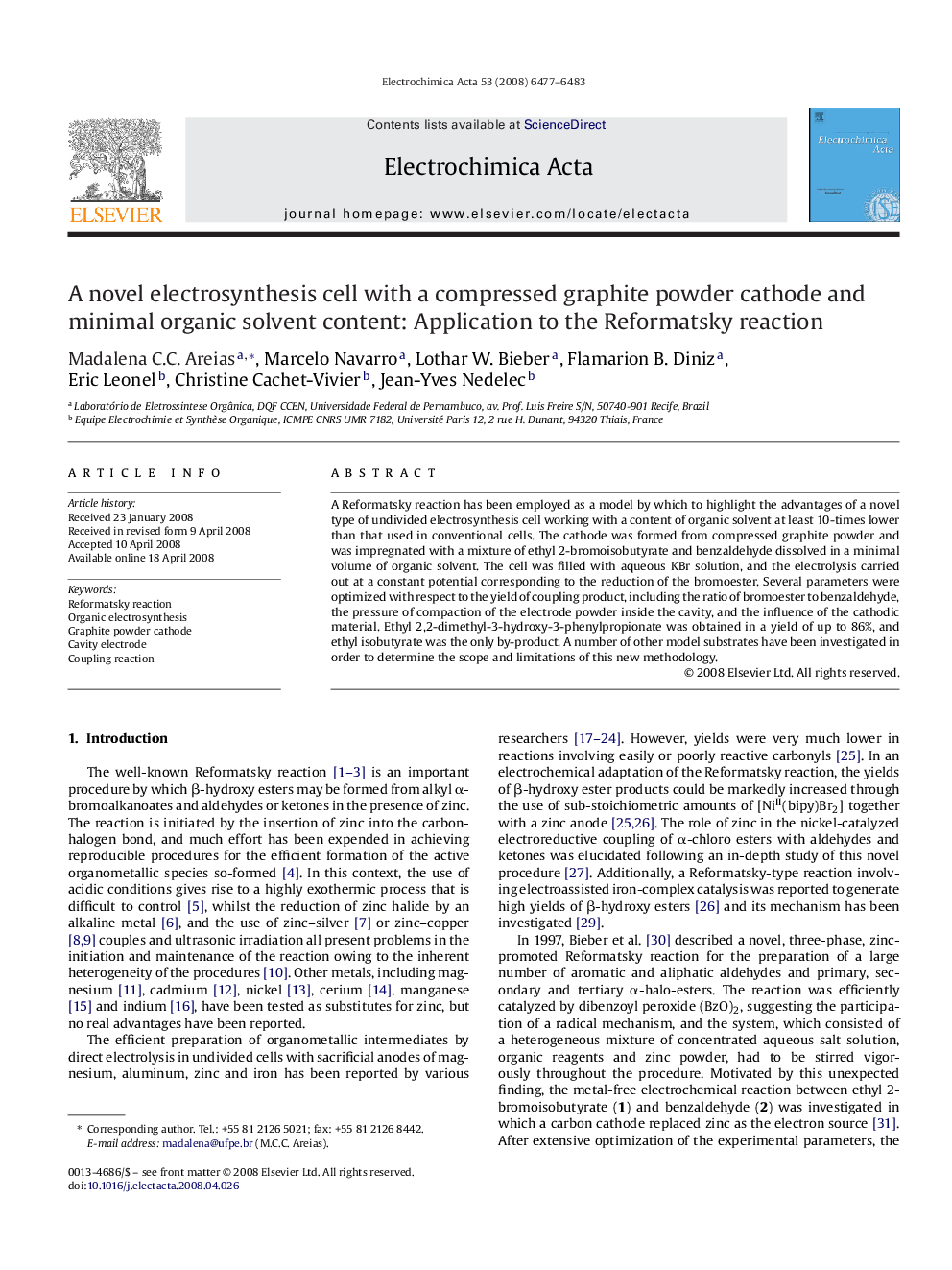| Article ID | Journal | Published Year | Pages | File Type |
|---|---|---|---|---|
| 195283 | Electrochimica Acta | 2008 | 7 Pages |
A Reformatsky reaction has been employed as a model by which to highlight the advantages of a novel type of undivided electrosynthesis cell working with a content of organic solvent at least 10-times lower than that used in conventional cells. The cathode was formed from compressed graphite powder and was impregnated with a mixture of ethyl 2-bromoisobutyrate and benzaldehyde dissolved in a minimal volume of organic solvent. The cell was filled with aqueous KBr solution, and the electrolysis carried out at a constant potential corresponding to the reduction of the bromoester. Several parameters were optimized with respect to the yield of coupling product, including the ratio of bromoester to benzaldehyde, the pressure of compaction of the electrode powder inside the cavity, and the influence of the cathodic material. Ethyl 2,2-dimethyl-3-hydroxy-3-phenylpropionate was obtained in a yield of up to 86%, and ethyl isobutyrate was the only by-product. A number of other model substrates have been investigated in order to determine the scope and limitations of this new methodology.
